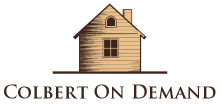When used properly, a snow blower can be the most convenient piece of winter outdoor power equipment you own. Clearing snow from around your property goes from being a painstaking job that can take hours to a quick and easy task that can even be fun.
No matter the area or surface you need to clear, there are snow blowers for every type of winter condition with the added features and specifications available to meet your needs.
However, snow blowers must be used with caution so your No. 1 priority when operating one should always be safety. If you don’t take the recommended safety precautions with your snow blower, the consequences can be drastic: you can permanently damage the machine and you risk causing serious injury to yourself and others.
To help you avoid that, we’ve put together a list of 12 safety precautions you should follow before and during operation of your snow blower.
Note: In addition to the tips below, remember to always read the operator’s manual and fully understand all recommended snow blower operating instructions before using your machine.
Safety Tips To Follow Before Snow Blower Operation
• Get to know your snow blower: Familiarize yourself with all the machine’s controls and how to use them properly, including how to correctly stop the snowblower and disengage it quickly, by reading through the operator’s manual. It’s also worth reading the manual’s safe operation practices.
• Keep away from children: Don’t allow your snow blower to be operated by children under the age of 14. If a child aged 14 or above does operate the snow blower, ensure they have a full understanding of its controls and safe operation practices.
• Machine maintenance: The key to a safe snow blower is keeping it well maintained. Refer to the operator’s manual for a maintenance schedule and always ensure all of the snow blower’s parts are kept in good condition. If your snow blower has damaged parts, do not use the machine.
• Protect yourself: Put on protective eyewear before you begin to use your snow blower. Also don’t wear any clothing that is loose-fitting and has the potential to get stuck in the snow blower.
• Clear all debris: Before you start to clear snow, thoroughly inspect the area you’ll be clearing and remove all objects or debris that could get stuck in your snow blower or thrown through the chute assembly.
• Warm it up: Start your snow blower outdoors in a well-ventilated area and let it run briefly before operation to warm up the engine. Also give the snow blower and its engine time to adjust to the cold temperatures before you begin clearing snow.
Remember not to run the snow blower engine indoors or in a poorly ventilated area as engine exhaust contains carbon monoxide.
Safety Tips To Follow During Snow Blower Operation
• Clear the area: Make sure that bystanders and pets stay at least 75 feet clear of the snow blower while the machine is in use. When the snow blower is in operation, never aim the chute assembly in the direction of people or animals. Objects thrown from a snow blower chute can be dangerous and cause injury.
• Visibility is crucial: While it’s best to clear snow during or immediately after a snowfall, visibility always takes priority. If conditions do not allow for good visibility, do not operate your snow blower.
• Watch your step: Wearing the proper footwear will go a long way in helping you avoid slipping or falling while snow blowing. However, winter conditions can be unpredictable so you should always exercise extreme caution while operating your snow blower in order to keep your footing.
• Avoid steep slopes: Certain types of snow blowers can be used on mild slopes, but operators are advised to do so with extreme caution to avoid accidents. Never use your snow blower on a steep slope, however, no matter the type of machine. They’re not made to clear snow on dramatic inclines or declines as doing so is dangerous.
• Unclog safely: It’s common for a snow blower’s chute assembly to become clogged. Always use your snow blower’s chute cleanout tool – usually attached to the back of the auger housing – to clear the machine’s chute of a clog. Never use your hands to clear out the chute assembly, and never put your hands or feet near rotating snow blower parts as doing so can result in serious injury.
When your snow blower becomes clogged, turn off the engine and stand behind the machine until it comes to a full stop. After that, use the cleanout tool to clear snow and debris from the chute.
• Turn it off: As with unclogging the chute, never make any adjustments or repairs to your snow blower while the engine is running, except in instances when it’s recommended in the operator’s manual. If you’re operating your snow blower and need to make an adjustment or repair, turn off the engine and stand behind the machine until it comes to a full stop.


